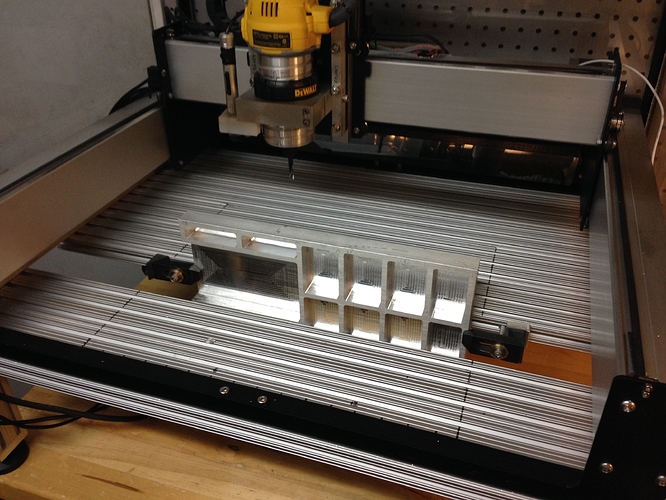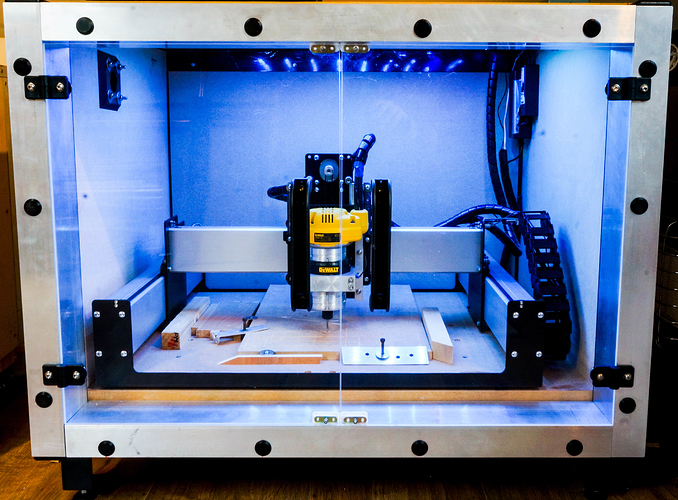Here is what I’ve been working on the last 10 days or so.
I tried, I really did, at using the Nomad 883 Pro enclosure. I just could not fit the LED lighting and a dust head that uses tubing large enough to reach the safety levels that I’ve come to expect.
My wife of “ok” with the sound but eventually asked if I can could “lower the volume”.
Any CNC machines I’ve owned have lived in the garage. Now I have two inside (Nomad 883 Pro and PocketNC).
Since I design enclosures for CNC machines for people and I had most of the materials lying around I… I… kinda went nuts.
I lost the sides, top and front of the Nomad. Yes, I moved the serial number tag to the back.
You can see the power button on the lower right. That is why I want to know about the wires. I plan to replace the button with an LED and run the switch wires to the power button.
Three LED bars… and a dimmer. You can see the vacuum inlet on the upper right; tubing on top.
On top left is the WEB CAM so I can watch and hear what’s going on. No window in the enclosure. First time I’m trying this. I want the very best sound suppression.
The front door is on lift off hinges.
The enclosure is made of 1.5" T-Slot; the walls Alumalite ( a “high tech” composite material).
The foam is Whispermat, a professional, two level, sound suppression foam. It’s laminated onto the Alumalite via 3M Super 77 industrial adhesive and then pinned around the periphery via aluminum flats. The foam is left exposed to maximize the diffraction and sound suppression; it kills the wall reflectivity across many frequencies.
The bottom is 0.500" HDPE with 0.125" of Neoprene (a shock absorber) on top. The feet have shock absorbers but I plan on added better ones.
The whole thing is sitting on a welded steel frame desk I design some years ago. Unistrut where appropriate. The top is 0.750" heavy duty industrial material. Heavy.
The vacuum goes to a Festool with a Oneida cyclone; all on wheels.
I still have to fix up the cable runs out the back and tweak the flats a bit.
The cables enter on the rear right side, in line with the Nomad power and USB connectors. The hole also serves as the air inlet port for the vacuum connection (which is on the top right).










